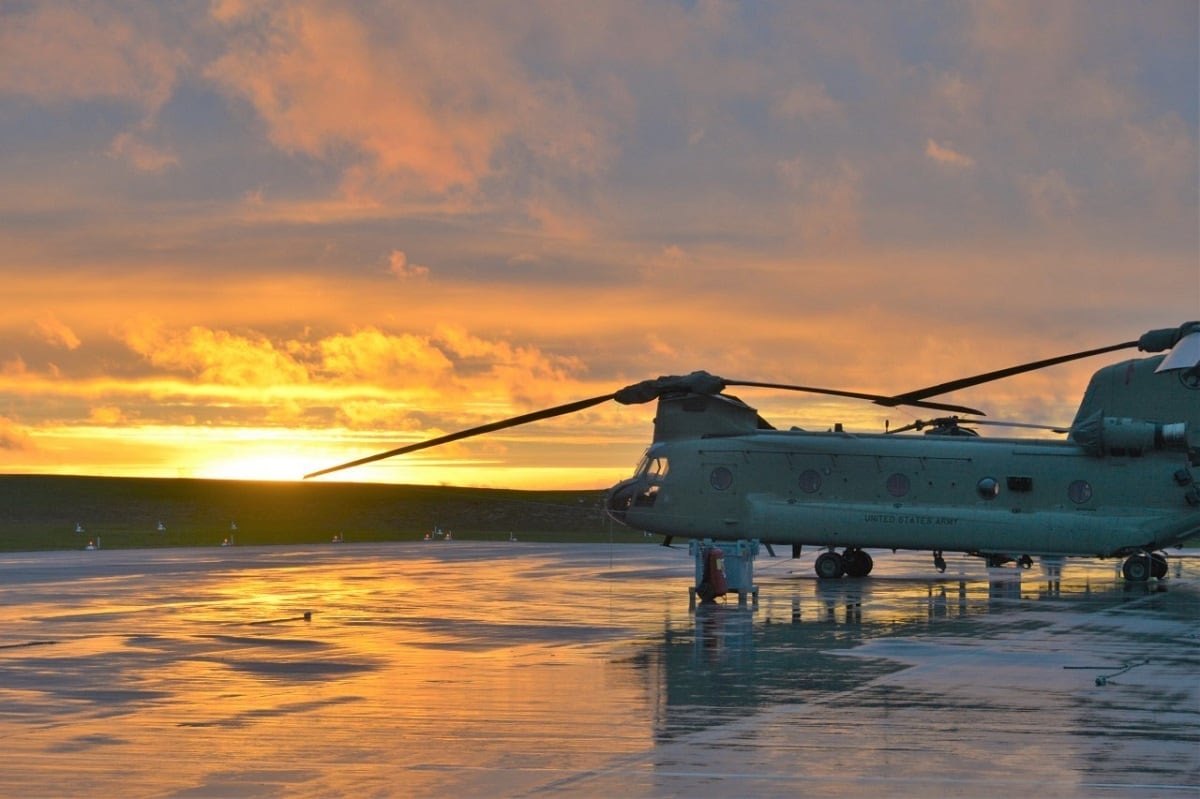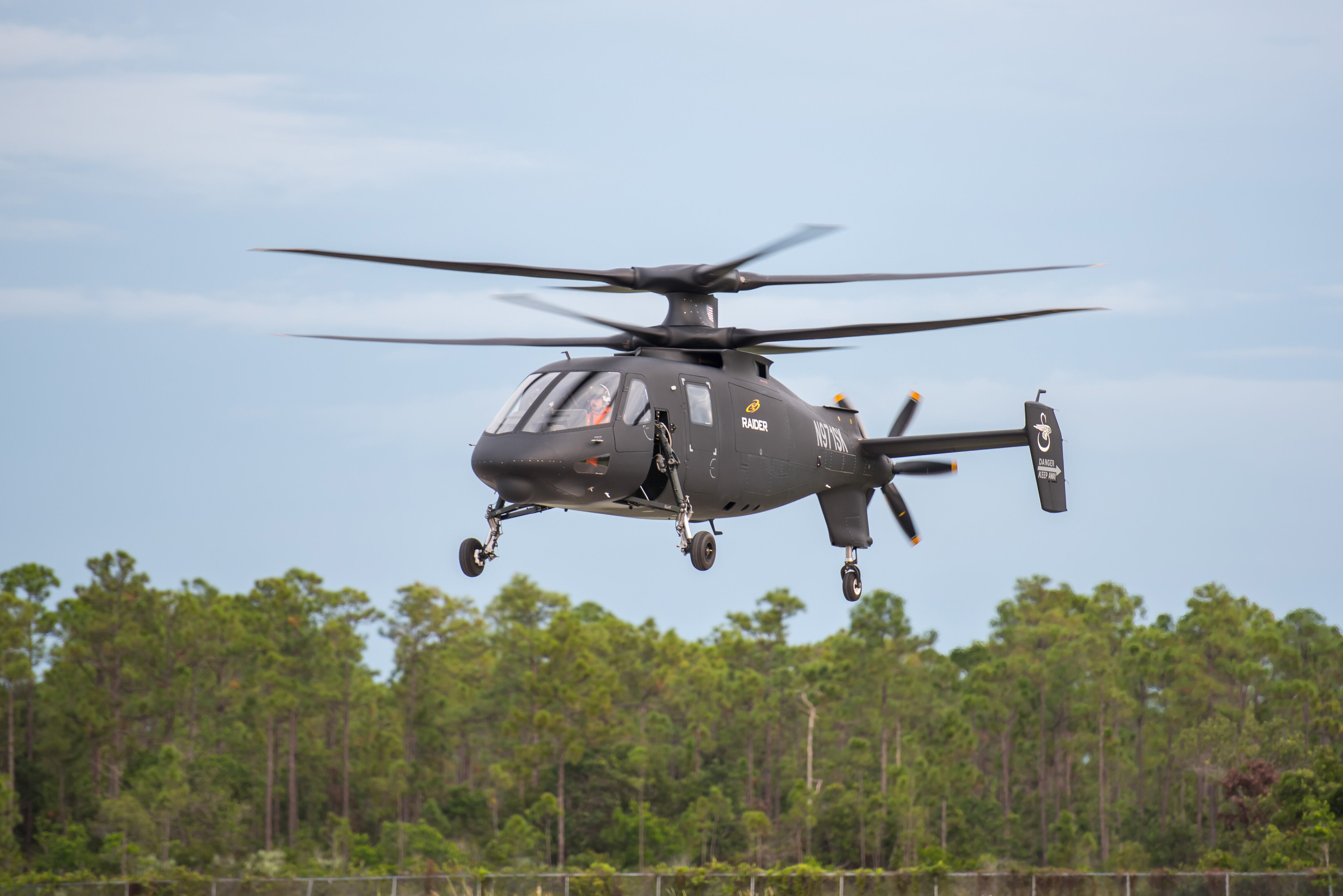WASHINGTON — Lockheed Martin-owned Sikorsky has engineered its S-97 Raider coaxial experimental helicopter to use the U.S. Army’s future engine in an attempt to present the aircraft as a strong and soon-to-be-ready contender for the Army’s Future Vertical Lift family of aircraft expected to come online in the 2030s.
Raider will be able to accept either one or two of the Improved Turbine Engine Program engines from the start, which will also help support bringing ITEP to fruition, Chris Van Buiten, the company’s vice president of technology and innovation, told Defense News in an interview.
“The engine in Raider is just a beautiful match,” he said.
The Army is said to be on track to award a contract to one of two teams currently developing a future helicopter engine in late 2018. The service awarded contracts to two separate teams to design future engines to replace an enormous portion of the service’s helicopters under the ITEP program. The Advanced Turbine Engine Company — a Honeywell and Pratt & Whitney team — was awarded a $154 million contract while GE Aviation was awarded a $102 million contract in August 2016.
ITEP is meant to replace every engine in both AH-64 Apache attack helicopters and UH-60 Black Hawks, and will provide both aircraft boosted capability from 3,000 horsepower to a 25 percent full-burn reduction.
It is also possible ITEP could be used in FVL aircraft, particularly in the lighter variant.
Raider currently flies with GE’s YT706-GE-700R engine.
While the Army has been adamant that it plans to first procure a medium-lift helicopter within the FVL program, the service has recently signaled it is more open to considering a lighter aircraft early on in the program capable of attack reconnaissance.
RELATED

The Army’s largest aviation capability gap remains armed reconnaissance after the service decided to retire the OH-58D Kiowa and replace it with larger, more expensive AH-64 Apache attack helicopters teamed with Shadow unmanned aircraft systems.
Van Buiten believes there is a case for the Army to first procure a light helicopter, of which Raider fits perfectly, because of the critical gap left when the Kiowa was retired.
Apache filling the gap now is “a big airplane for the reconnaissance role mission. As forces get pushed back by rapid-reaction rocket-kind of threats and will have to execute at a greater radius, I think the Apache is going to start to struggle in that recon role and have a lot of time on station,” he said.
RELATED

Sikorsky and Boeing are actually building a larger version of Raider called the SB-1 Defiant, which fits in the medium-lift class, and will fly as part of an Army demonstration called the Joint Multi-Role program that aims to evaluate the capabilities of two separate advanced helicopter concepts as it tries to shape the requirements for an FVL aircraft.
Bell Helicopter has designed the second demonstrator — a tilt-rotor called the V-280 Valor — which has been flying since late 2017.
While there’s a case to start with medium-lift, “you could argue that FVL light is just a smaller, lower-cost program,” Van Buiten said. “It’s hundreds of aircraft instead of thousands and might be a prudent way to get the ball rolling, get a win on the board, move FVL forward. It’s kind of a good warmup for a larger FVL program, and the multimission capability of Raider can give them a lot of flexibility.”
The Raider program experienced a setback last year when the helicopter sustained “substantial damage” from a hard landing during a flight test at the Sikorsky Development Flight Center in West Palm Beach, Florida, in early August 2017.
RELATED

The hard landing has not stopped Sikorsky from driving its work on the aircraft forward and the company is taking its second copy of Raider and preparing it to take flight this year as early as this spring, Van Buiten said.
“It’s a really exciting time, and we are seeing, even though we are in this dwell time not flying, we are seeing growing customer interest in the program,” he said.
Jen Judson is an award-winning journalist covering land warfare for Defense News. She has also worked for Politico and Inside Defense. She holds a Master of Science degree in journalism from Boston University and a Bachelor of Arts degree from Kenyon College.








